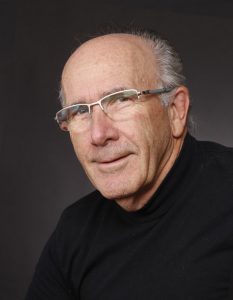
Marketing small businesses using social media platforms, website blogs, e-newsletters, video, podcasts, and webinars can be enhanced by reinforcing online tactics with traditional offline methods.
Marketing services for professional service providers such as engineering and planning companies, architects, industrial manufacturers, surveying companies, attorneys, medical clinics, accounting, and many others requiring regulated licenced staffs is a specialized function whether from within or through a vendor.
Professional service enterprises are knowledge-intensive where specialized intellect is for sale. Online marketing techniques alone are not enough to help professional small businesses acquire leads and convert leads to sales.
Let’s look at some numbers
Ecommerce conversion rates are around 2%. That’s fine if you are marketing to thousands of potential buyers, but if you are a microbusiness or small business in Canada with less than 4 employees marketing professional services locally or regionally, that rate of return is not encouraging. And here, the 2% number reflects ecommerce and not professional services, which I am certain, by drawing on my own experience of over 30 years, are not significantly higher, and likely to be less than 2% when marketed online only. And yes, the argument can be made that if one lead generated by ecommerce is converted to a major sale, then the conversion rate of 2% or less for a small business is worthwhile.
As of December 2019, the Canadian economy totaled 1.23 million employer businesses. Of these, 1.2 million (97.9 percent) were small businesses, 22,905 (1.9 percent) were medium-sized businesses and 2,978 (0.2 percent) were large businesses. Innovation, Science and Economic Development Canada data suggests that 86.4% of all employer businesses have five to 19 employees and one to four people (a microbusiness) accounts for 53.8% of all private employers.
The big question is, how do small business professional service enterprises with less than 19 employees and many defined as a microbusiness benefit from online marketing tactics only? I say, many cannot – and what can marketers do to improve the odds for increased sales?
I believe that there is a strong tendency among enterprises engaged in providing marketing services to Canadian businesses, especially to small and microbusinesses with small budgets for marketing (less than 1% to 5% of revenue) to spend entirely on social media platforms and websites. I agree that such spends are necessary, but quickly add that marketing online is not enough for a remarkable return on investment for marketing professional services.
COVID-19 increased the dependence of small businesses on common digital marketing tactics and introduced new tactics while reinforcing existing tactics in online marketing communications and delivery of marketing services from home offices. Zoom, Skype, Teams, “GoTo”, Webex, Messenger, WhatsApp, and many other online meeting apps are now common means to communicate with clients and prospects, anywhere in the world where there is Internet service and electricity.
COVID can be blamed for the loss of the “personal touch” to make a sale. The need among Gens X and Y entrepreneurs for immediate responses contrasts with Boomer entrepreneurs (yes, they are still here and wield enormous power through discretionary income and asset wealth) who are comfortable thinking about details before responding.
As small and micro professional services businesses adjust to a post COVID environment and prepare for the next major disruptor triggered by climate change, geopolitics, and another pandemic or epidemic, it is important to strengthen online marketing tactics with offline, traditional methods to generate leads and close sales.
Offline advertising in print media remains effective. Print media did not go away with the advent of inexpensive digital advertising. Publications suggest that Boomers are not the only generation that reads magazines. People under 30 are avid readers of magazines catering to certain interests. With a little research, a small business can discover if their service is of interest in print media and launch an advertorial campaign by working with the publication’s editor and sales representatives. A word of advice is to become acquainted with key people that work on content of selected magazines so they can help you tell your story to prospects and clients.
Online trade shows have major limitations. Nothing can replace the physical marketplace where a buyer can converse candidly with a vendor and work toward closing a transaction. For small businesses, the physical marketplace includes the tradeshow at major events and conferences. The business card remains a powerful marketing tool as are printed flyers and brochures that tell a convincing story in graphics and words about a knowledge-intensive service. Regional trade shows and a professionally managed exhibit booth can boost sales and reinforce the confidence of existing clients that your business and services are here for the long term. When you consider that a display booth and a presentation at a trade show places your business before numerous prospects and clients within a short period, the cost of the event and exhibit material may be significantly less than a few protracted in-person sales calls.
Marketing campaigns for small professional services enterprises are most effective when there is a combination of offline and online tactics to help generate leads for people skilled in sales to close transactions. Clients of professional service providers appreciate the personal touch. It is important to communicate and read each other’s behaviour in person while transacting a sale. Online tactics can facilitate those meetings, but they cannot build lasting trusting relationships. Physical meetings are required to seal the deal when major lifestyle and economic decisions are to be made. Knowledge-intensive services are not commodities that are sold in bulk. Each sale is a personal experience that can be enhanced through tactical elements of offline and online marketing campaigns.

Grant Lee, CPM
Marketing Strategies and Tactics
